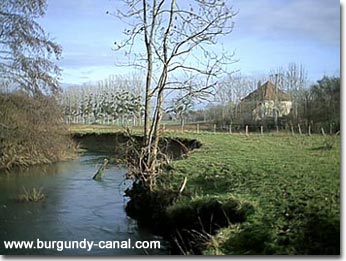Water reservoirs for the canal
The greatest problem for the Burgundy Canal since its construction has been to maintain an adequate supply of water, necessary to operate the locks which allow the barges to cruise.
Millions of tons of water are required each year so that the locks can be filled.
To accomplish this, water is stored and supplied in different ways. Firstly we'll explain the purpose of the reservoirs.
All the reservoirs are filled with winter snow and rain. There are small "canals/ dykes" supplying water from the reservoirs to the canal, these being controlled by the local keepers. The water is sent from the reservoirs to the canal at critical times and in a regulated manner to assist in maintaining the required water levels.
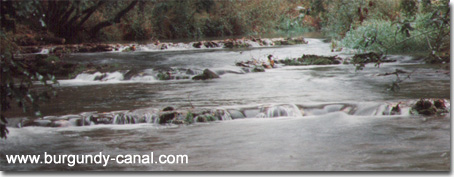
The canal uses reservoirs, rivers and springs to accumulate and store water. Delivery of water depends on the altitude of the canal. Near the summit of the canal between Veneray, Pouilly and Crugey, the water is supplied by 5 reservoirs: Grosbois, Cercey, Panthier, Tillot and Chazilly.
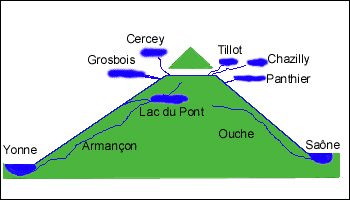
The above diagram shows the difference in altitude between the reservoirs and the canal summit.
Through the years the reservoirs have also developed their own "micro" ecological environments.
Grosbois reservoir
The most spectacular reservoir on the Burgundy Canal is the reservoir of Grosbois. The dam of the reservoir was built from 1830 to 1838, and is 22.30 metres high, with a capacity of 9,220,000 cubic tonnes of water. In 1842, nine reinforcements were built giving the dam more stability. The dam is 530 metres long, and the surface area of the reservoir is 105 hectares. Due to lack of funding and upkeep, the capacity has been reduced to 7,800,000 m3. There is also an additional part to the reservoir below the main damn, built in 1900. A supplementary earthen dam was built holding 820,000 m3 of water, in an attempt to increase water reserves for the canal. Further work on the dam in 1986 increased the capacity to 910,000 m3.
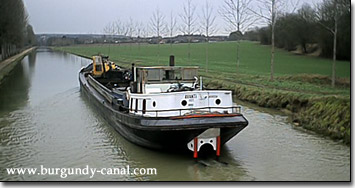
Cercey reservoir
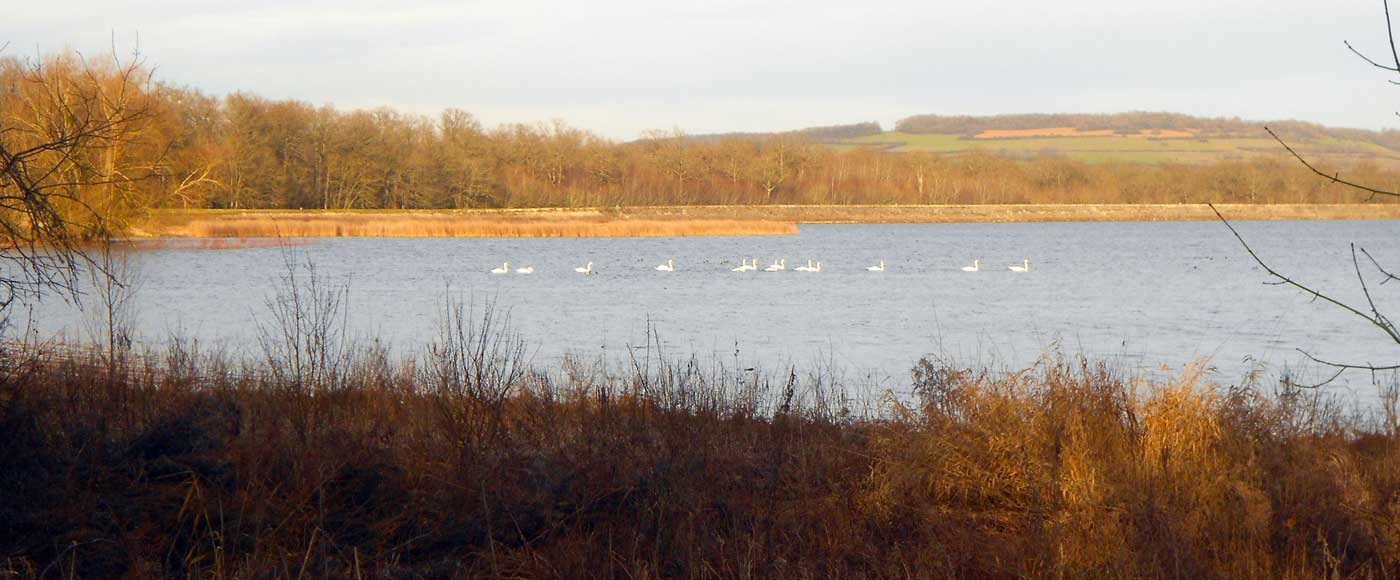
Cercey Reservoir, with its 1.02 km earth dam and capacity of 3,590,000 m3, was built in 1834 and took 2 years to complete. Stone reinforcements were added in 1868 to prevent landslides. The reservoir covers 63 hectares. It has a path around it of approximately 3.2km (2 miles), which is a very pleasant walk and also a haven for birds and wildlife.
Cercey has now become a favourite place for keen anglers. You can camp at the water's edge, and night fishing is allowed (please ensure you have the correct permits before you fish).
Panthier reservoir
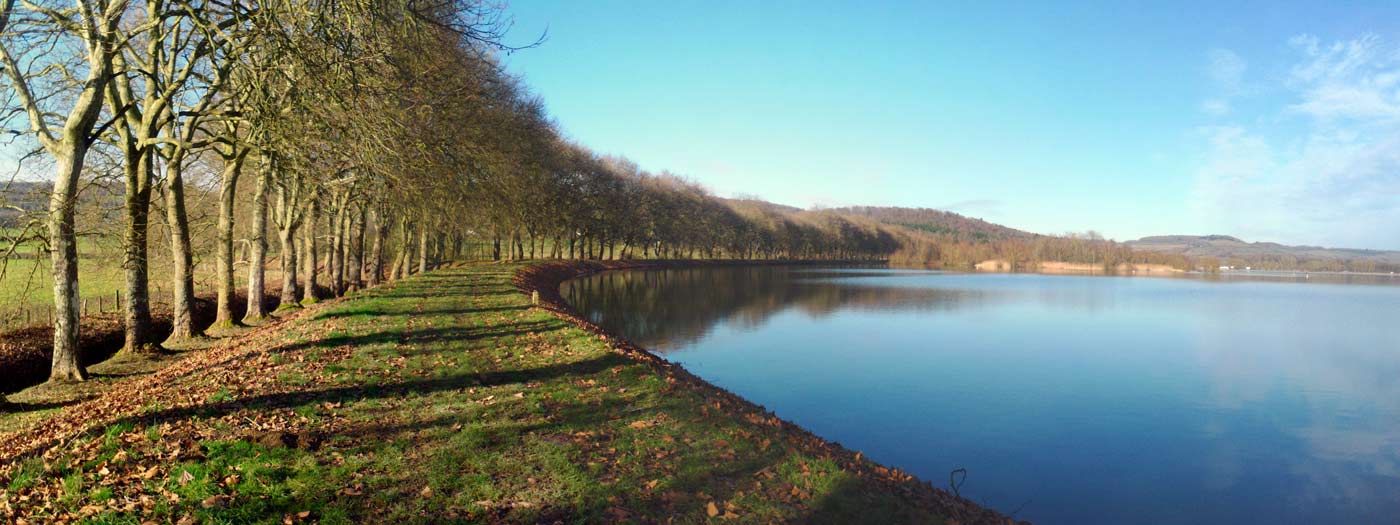
Panthier Reservoir has an earth dam, 7.60 metres high, which was built in 1834 and then enlarged in 1869 to 13.94 metres, to hold 8,050,000 m3 of water. It covers 120 hectares. The reservoir is below the canal's summit at Escommes and acts as an overflow in capturing water from the summit. The first canal "pound" that Panthier can supply is at lock n° 9 on the Saône side. A large and popular campsite has developed at Panthier, where you can also enjoy swimming, sailing and fishing.
Tillot reservoir
Tillot has a stone dam and reinforcements it was built in 1830. The dam is 9.30 metres high and holds only 520,000 m3. This reservoir operates as an overflow for Chazilly and is the smallest of the reservoirs..
Chazilly reservoir
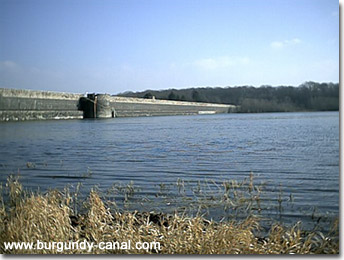
Chazilly is very similar to Grosbois. The stone dam is 22 metres high and has a capacity of 5,190,000 m3, covering 52 hectares.
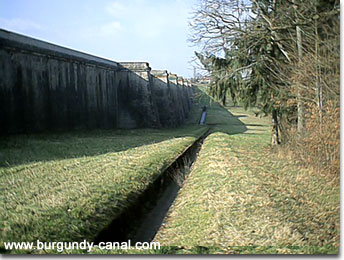
The dam wall of Chazilly is very impressive and reaches a height of 22.5 metres. Construction of the reservoir took 7 years, from 1830 to 1837, and was overseen by the engineer Monsieur Bonnetat.
Lac du pont
The Lac du Pont with its granite wall, was built in 1879 to capture water from the Armançon River. The reservoir holds 6,000,000 m3 of water, covering 80 hectares with a perimeter of 12,3 kilometres.
